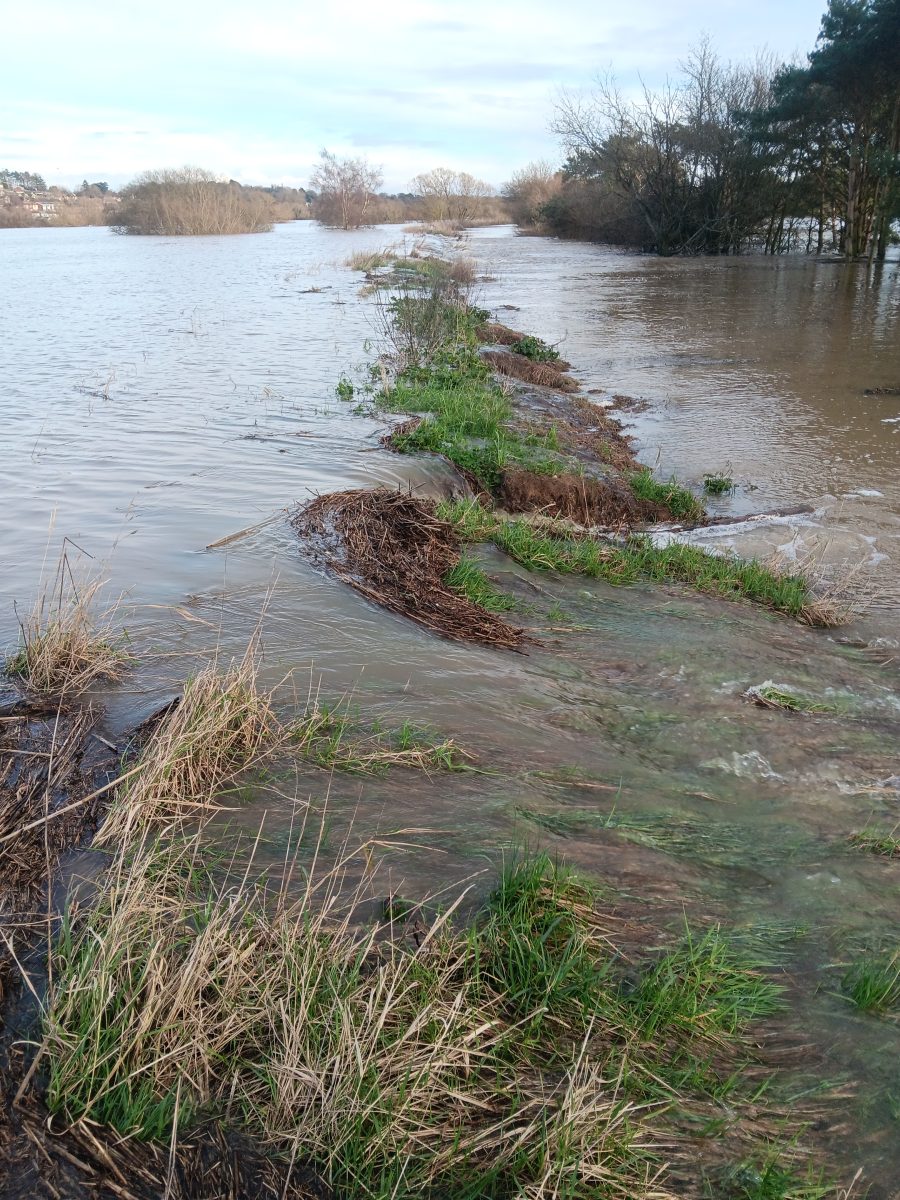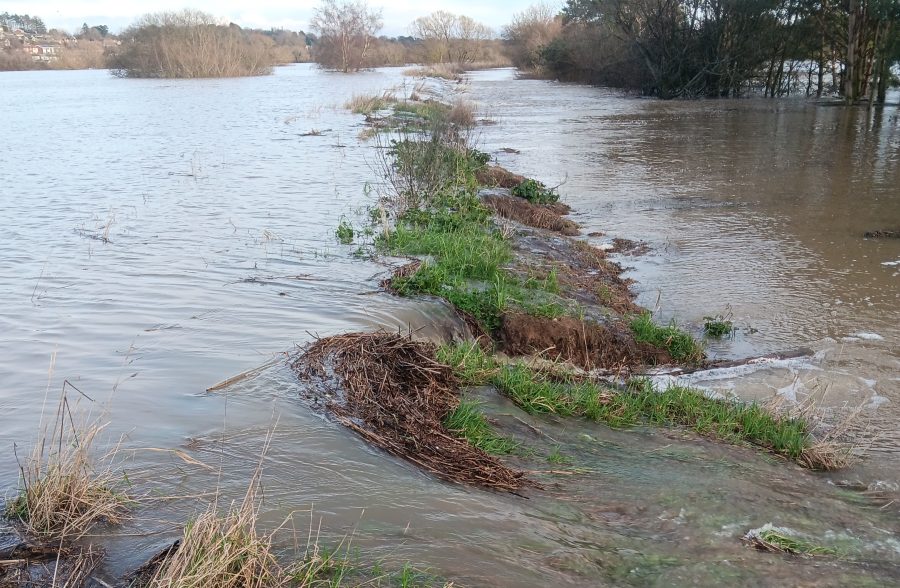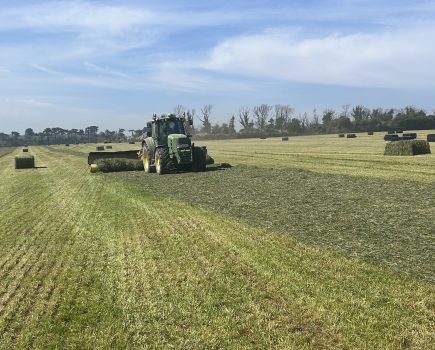Not only have we farmers had to bear the neglect of our rifes along the south coast but inland, along the banks of the River Arun, farmers have had equal frustrations with the ‘responsible’ body for the past decade.
We have been waiting for two years for repairs to the riverbanks, which have been gradually eroding as high tides have topped the banks and washed their bases away. Finally, late last summer, we heard they had set up a deal with another company to do the long-awaited task, work that was finally finished just in time for the winter weather to hit us. Within a couple of weeks it became apparent there was a major problem, as high tides quickly came over the top of the repaired river banks.
In January the extent of the trouble was exposed when, within just one really high tide, some 200 acres was under up to 10ft of river water. When we were able to get close enough to take photos, it became apparent that the river bank repair had been finished off between two and six inches below its original height, so allowing the next very high tide to pour over and, with it, wash out huge chunks of the newly reinstated bank work.
It’s not easy to contact the senior staff concerned as they don’t like bad news or are ‘on leave’. So the only person we could speak to was the local “FCRM advisor (not sure what that means) of the Arun and Adur Asset Performance Team”. A man one can have a discussion with, he admitted that he had been telling the contractors that they were ‘finishing’ the banks too low, but was ignored. Now we can see who was right. Doubtless the senior managers of the ‘asset and performance team’ will be given good bonuses at the end of the financial year.
Meanwhile we and so many other farmers along these ill-maintained waterways wait and hope some less limp administration takes hold of the problem and gets our rivers flowing as designed, and then sees that they are maintained. When they perhaps revert to something close to the old internal drainage boards, staffed by locals and run by people with practical experience and costing a tiny fraction of the present setup. When maybe even local farmers might again be involved?
We are slowly progressing towards our woodland scheme with great cooperation from the Forestry Commission. Nothing is done quickly these days once any government body becomes involved. Fortunately, we are getting strong support for the scheme from both our agent and the commission’s woodland creation officer for the South East who is proving a great assistance and appears almost as keen as I do to get the land planted and protected from the insatiable developers.
It isn’t until one ventures into a plan like this that one realises the complexities involved, beyond getting an overall grip on what’s needed, which is quite basic. “I want to plant a wood” sounds easy? But then there are little things, allowances for the likes of public footpaths, underground electricity, sewers and water mains; overhead electricity pylons, too, but in this case they are of minimal concern.
We had concerns about the best way to protect the trees; tubes or deer fencing? We have decided to go for the latter, which also takes care of some footpaths which can just be fenced off. Then you need to find a grower who meets the commission’s environmental requirements, as well as having available the tree species you want. I have gone for mixed native species, which sadly excluded ash, but with the final emphasis on an oak woodland with several hundred years’ life.
Since this scheme is immediately adjacent to the farmhouse and neighbours, it’s important it’s done so it only has positive features. We won’t live to see it to maturity, but it has to be right, and its planting needs to consider how it will develop. For example, other properties will need good access to light and to be free of falling timber, so large species need room to grow and to drop limbs without causing damage. It seems it will all be possible without any local objections, since the residents of my little hamlet appear to be strongly in favour, given their alternative is being overrun with newbuild housing!
Already I am getting offers to assist with the planting, although aching backs and winter weather may cause the enthusiasm to wane quite fast. It is, though, a chance for local people to do something they, and their families, will be able to get pleasure and satisfaction from for generations to come.

The River Arun, left, pouring through and over its banks into farmland ten feet below







